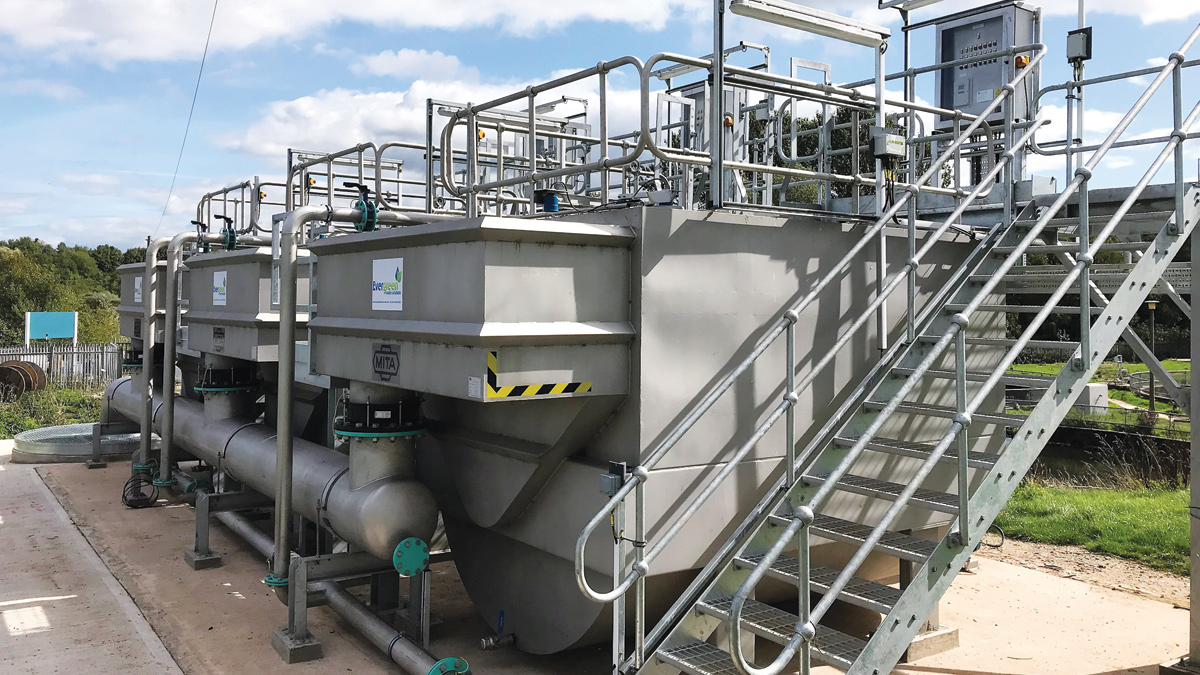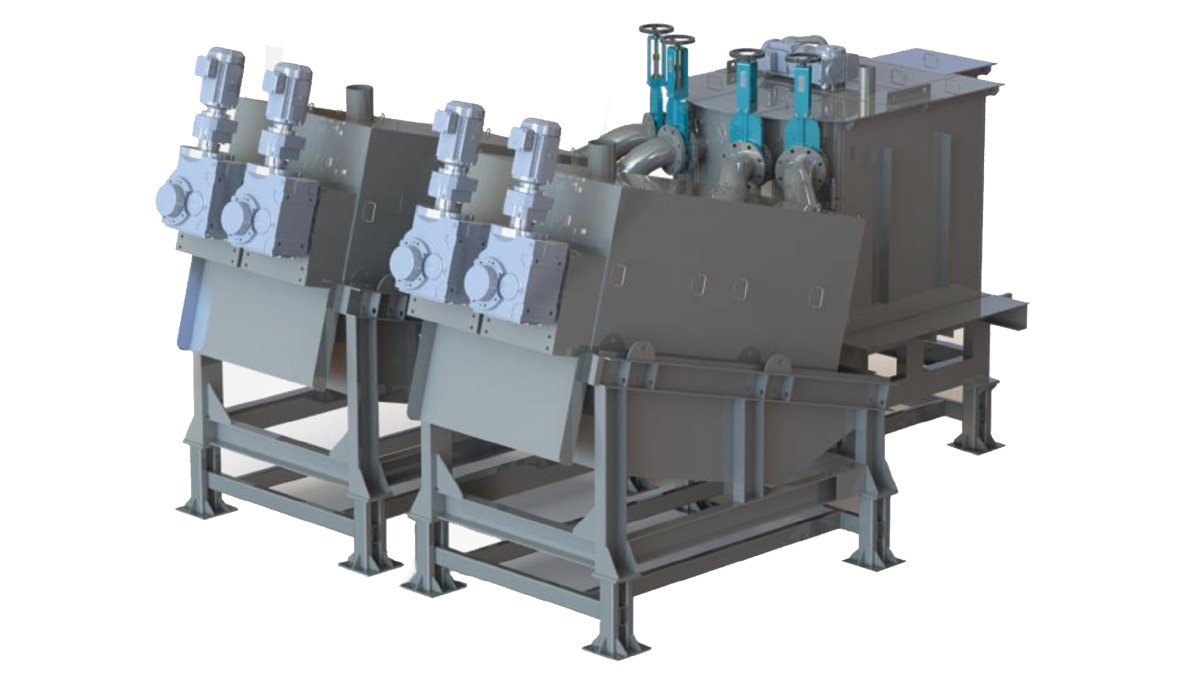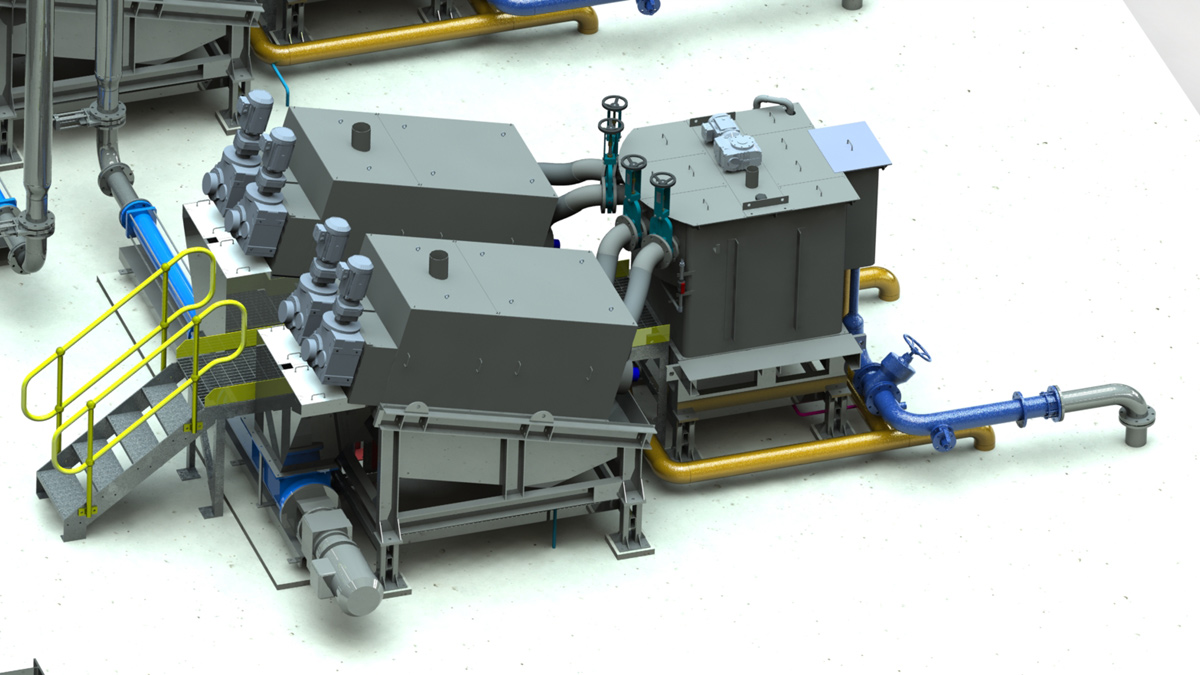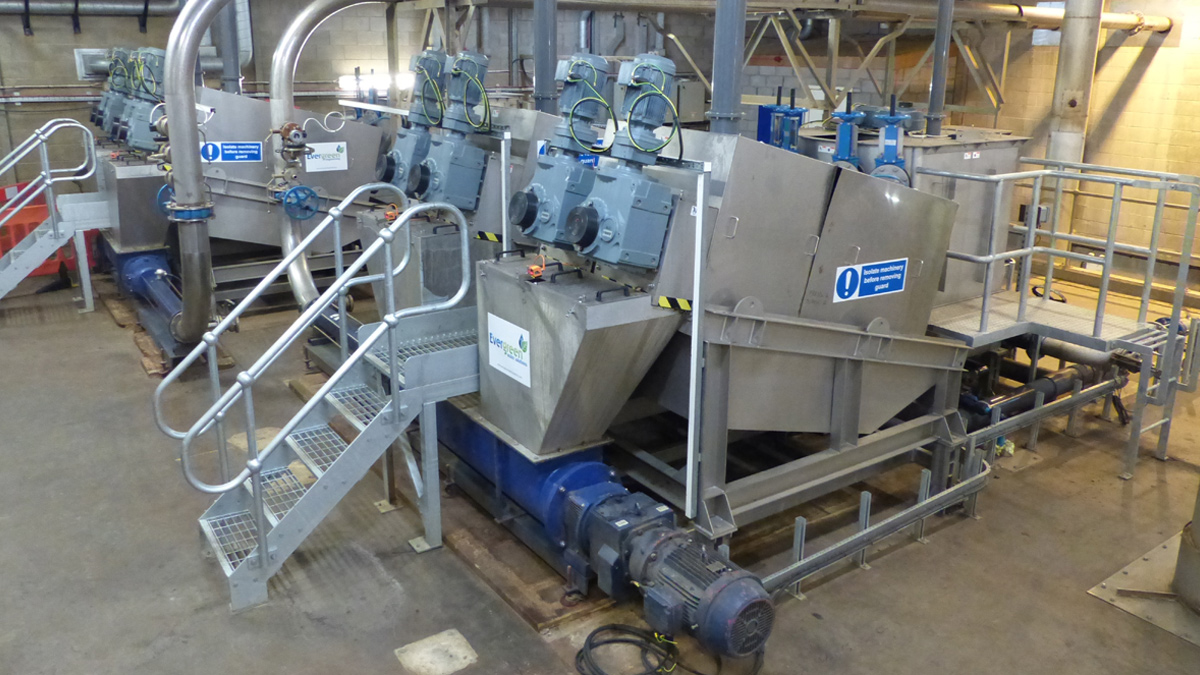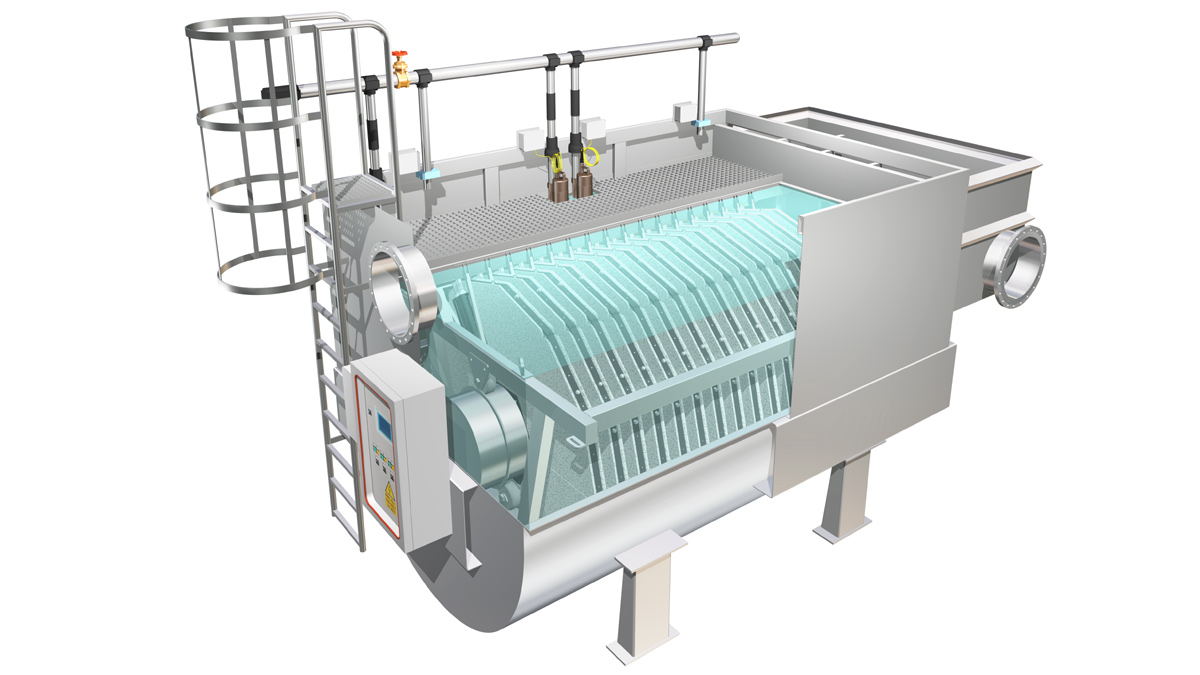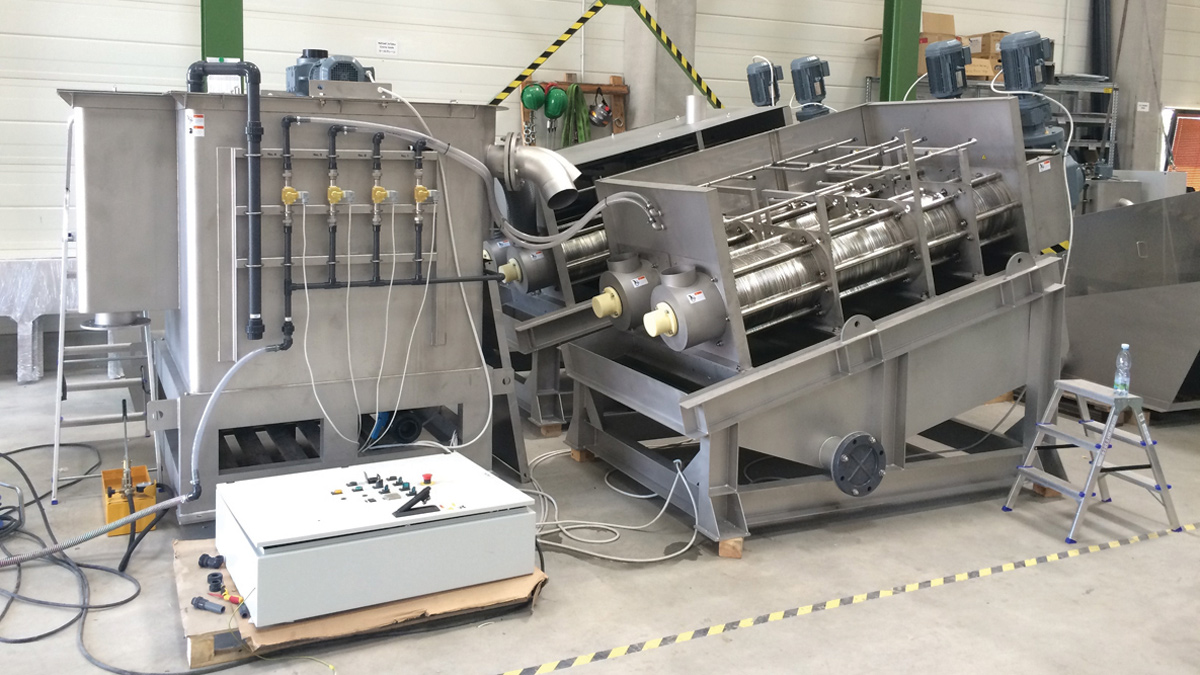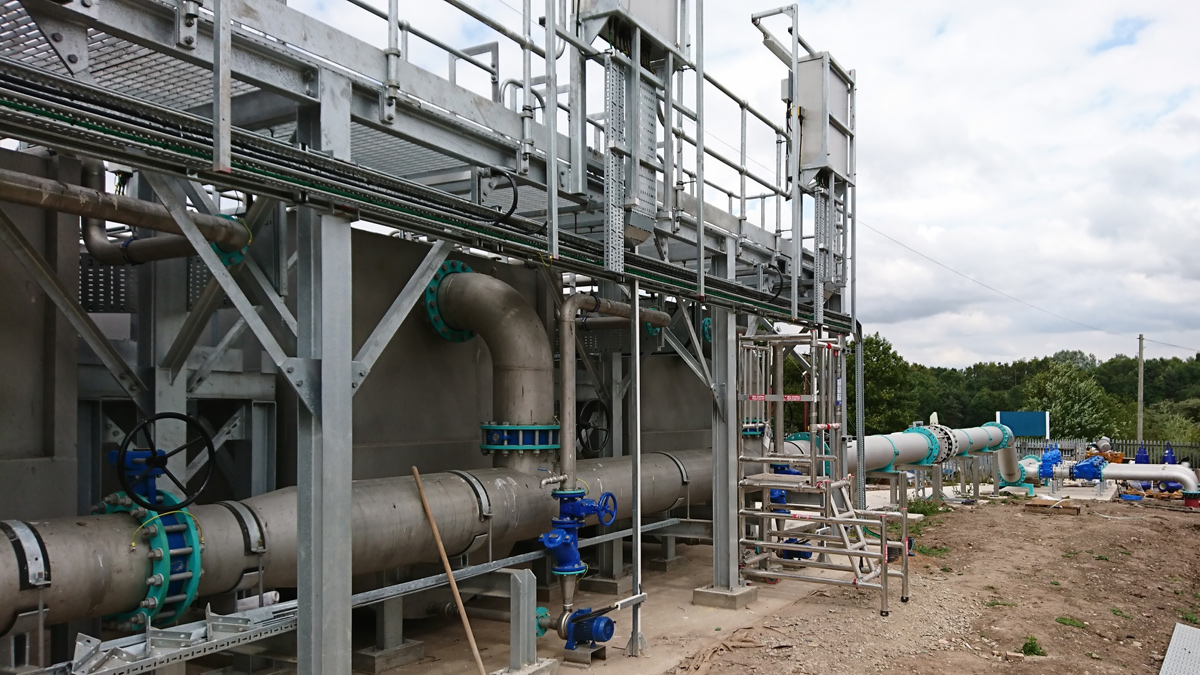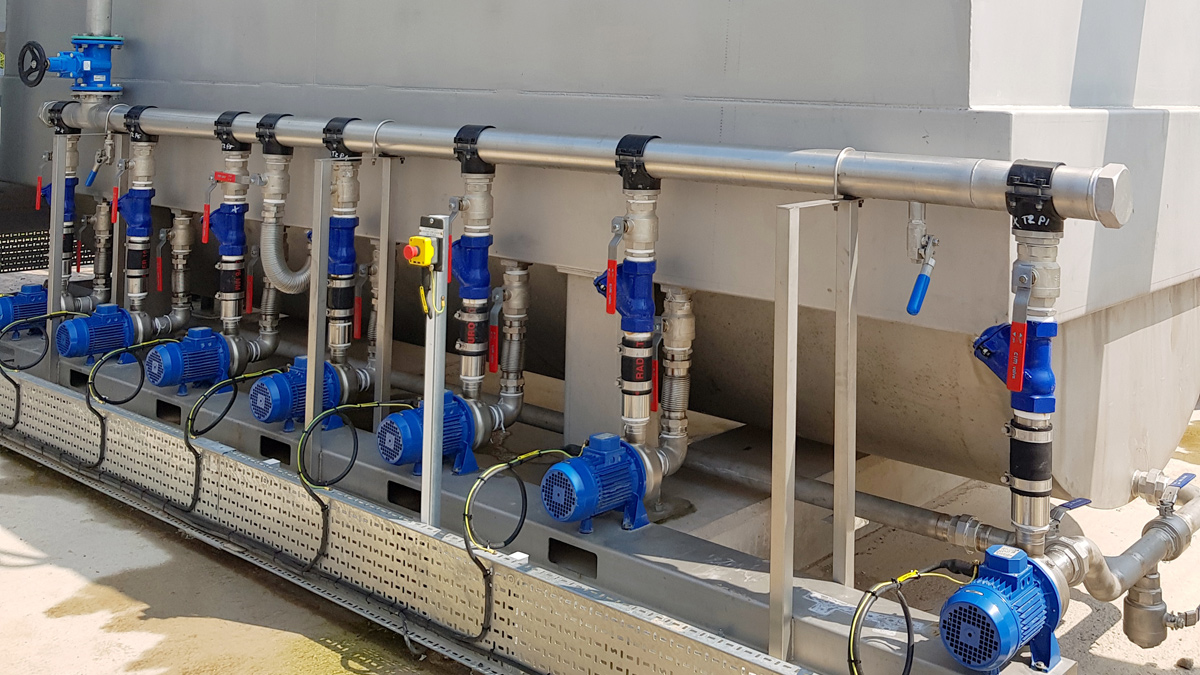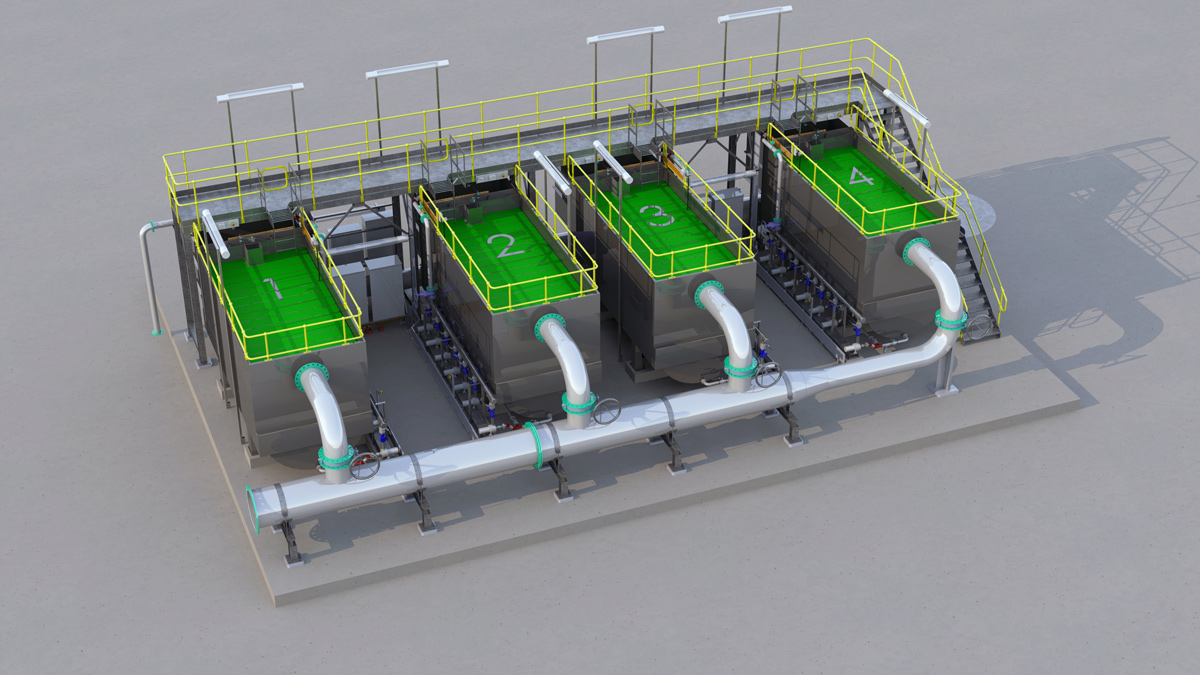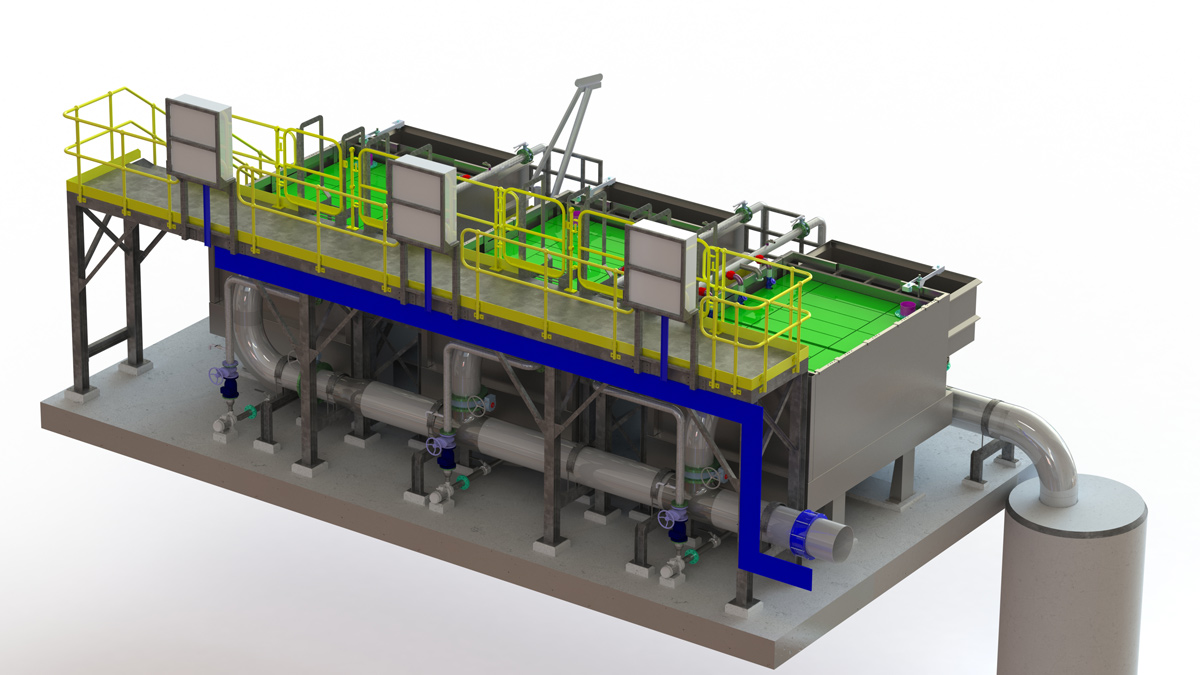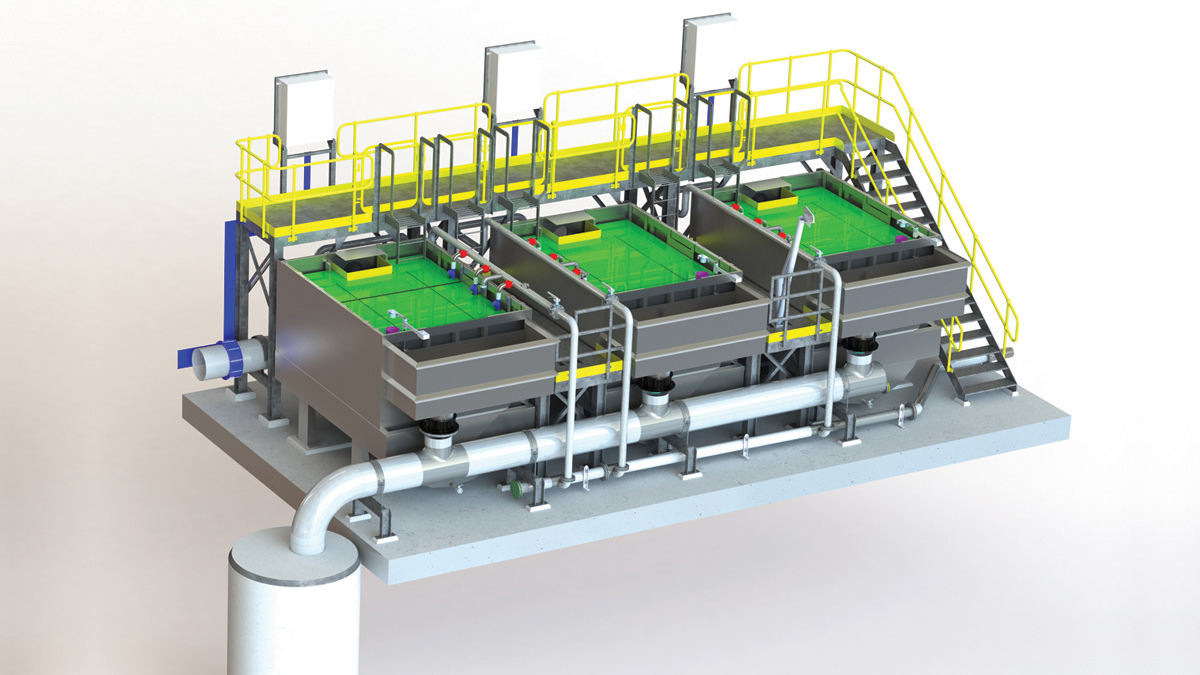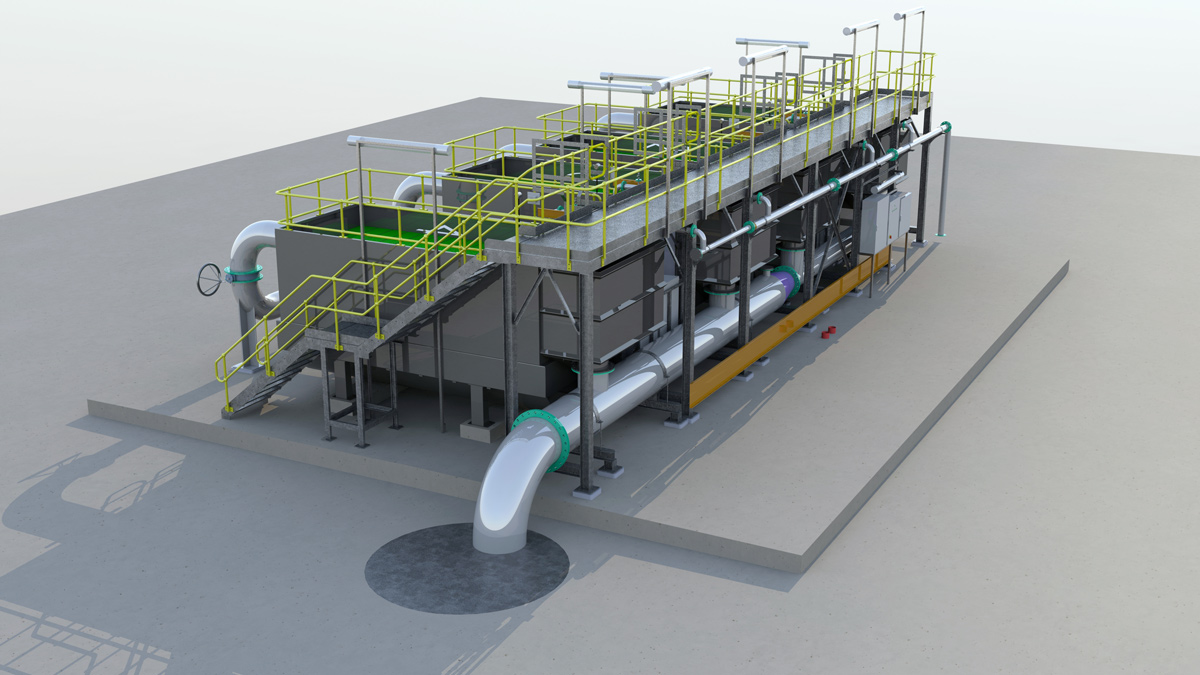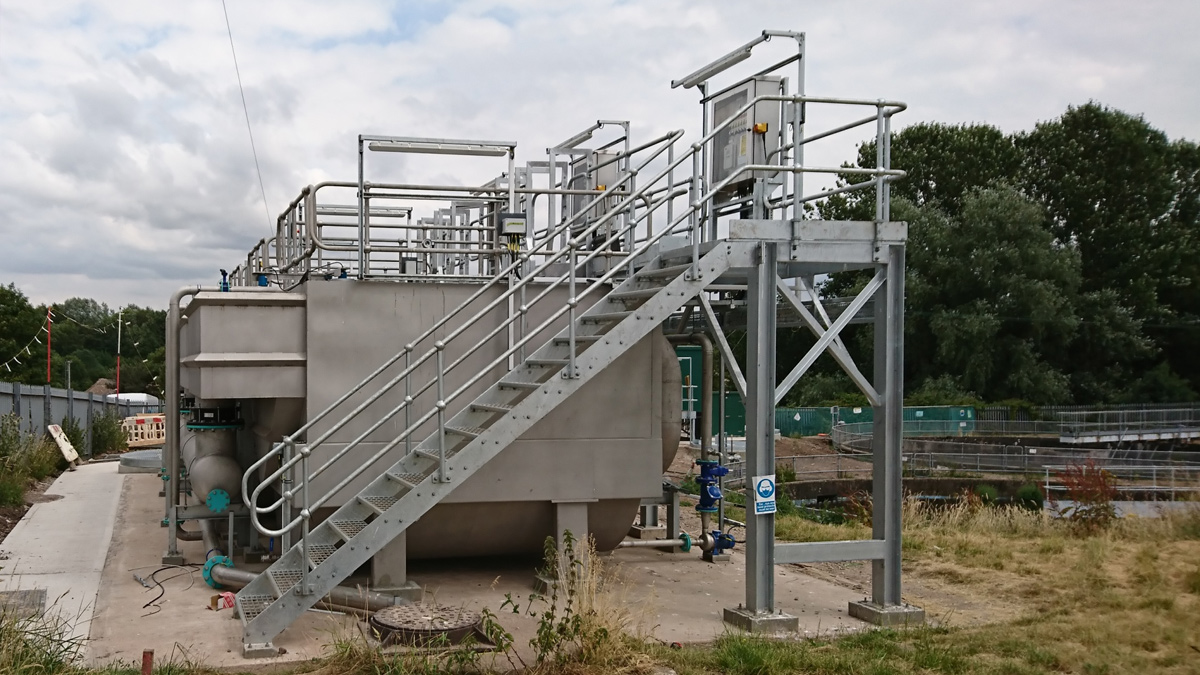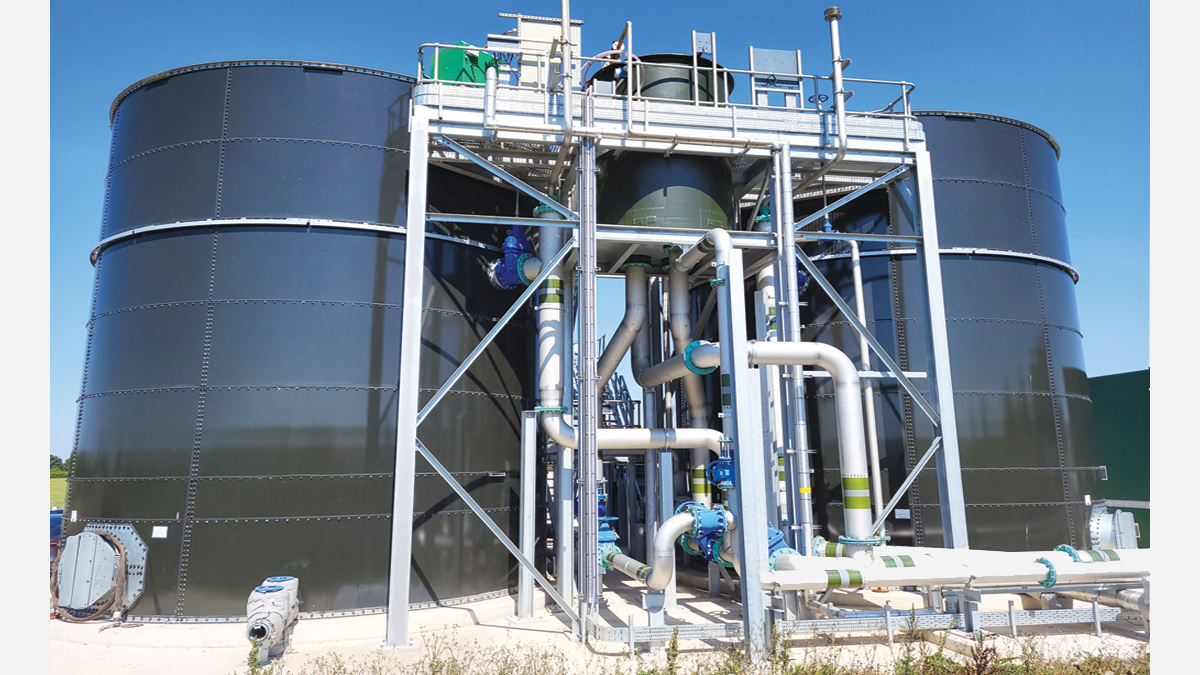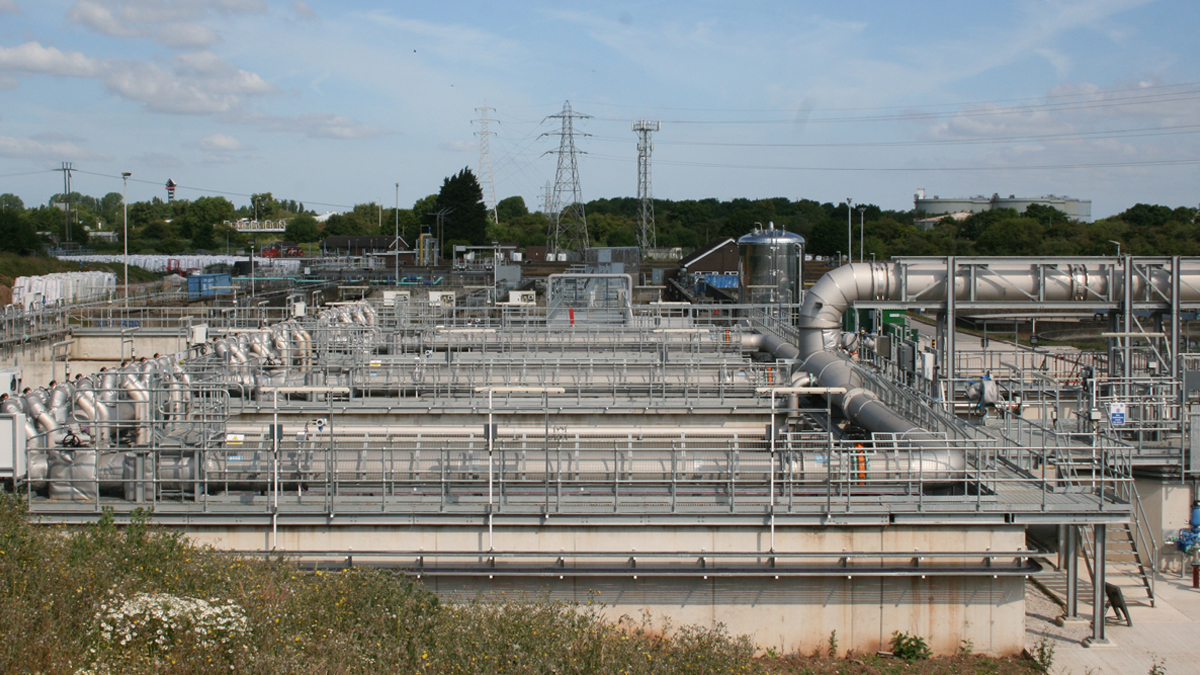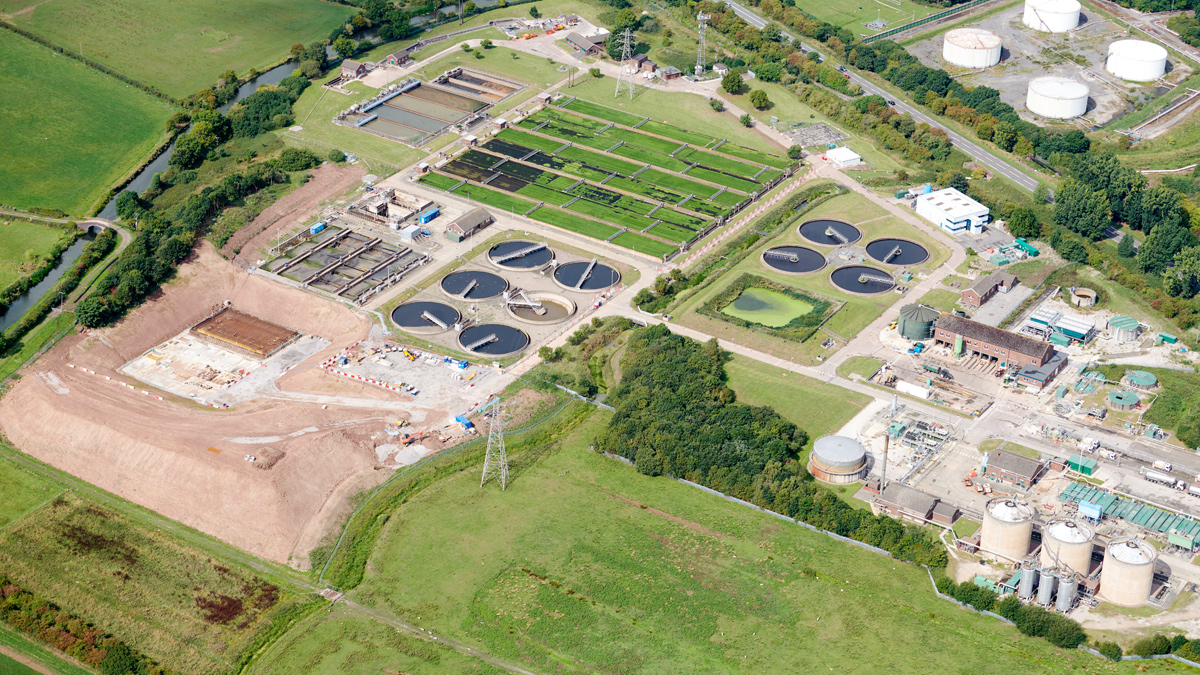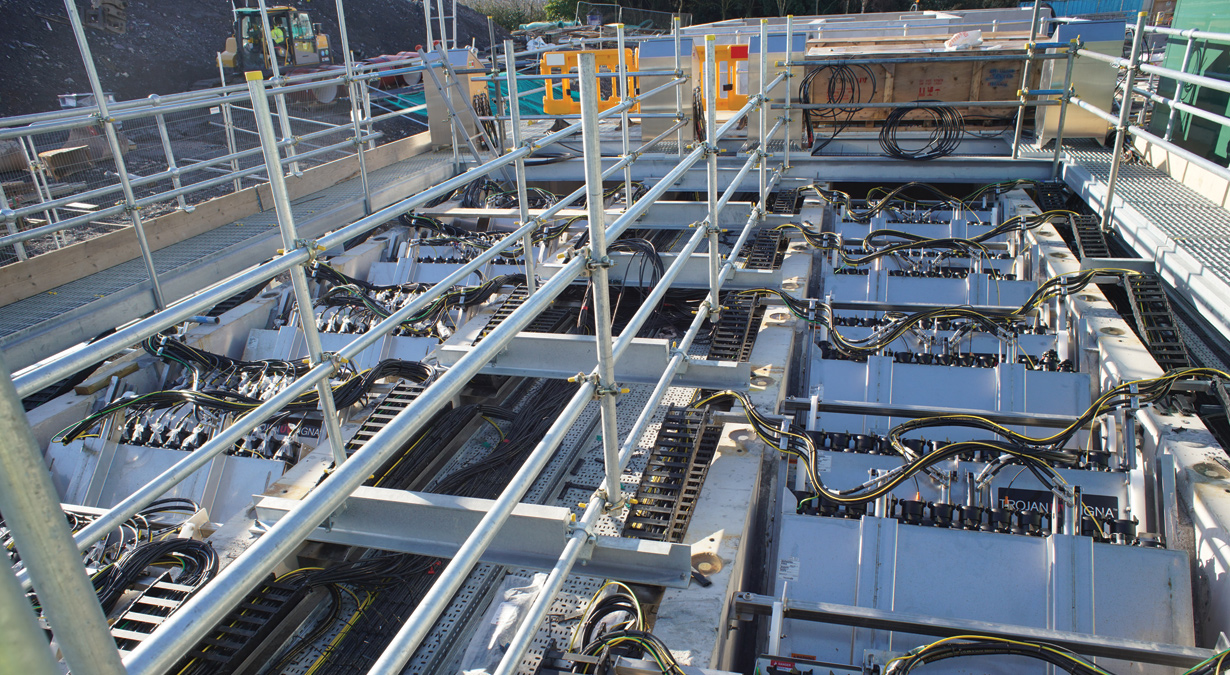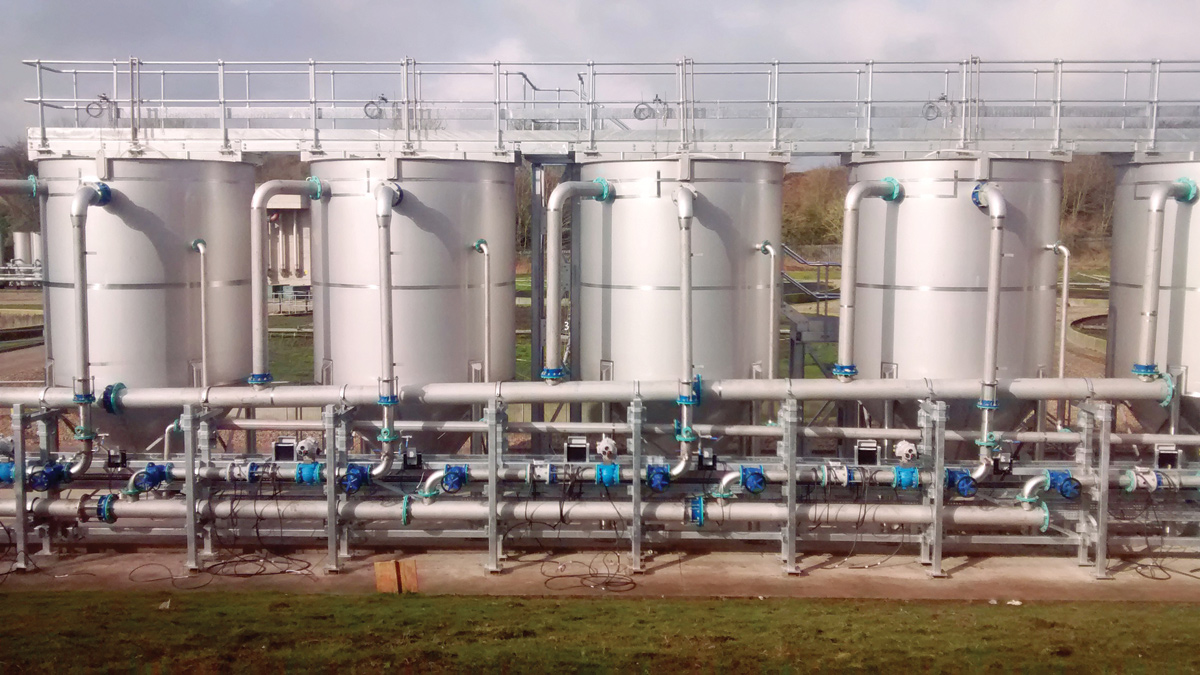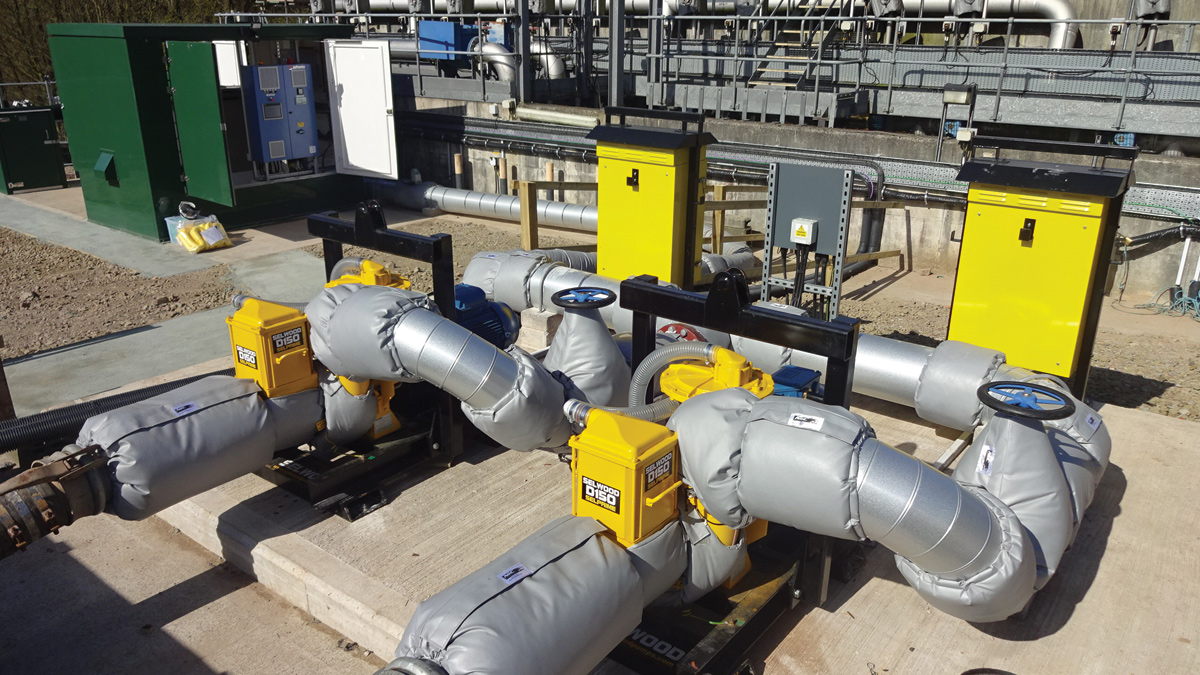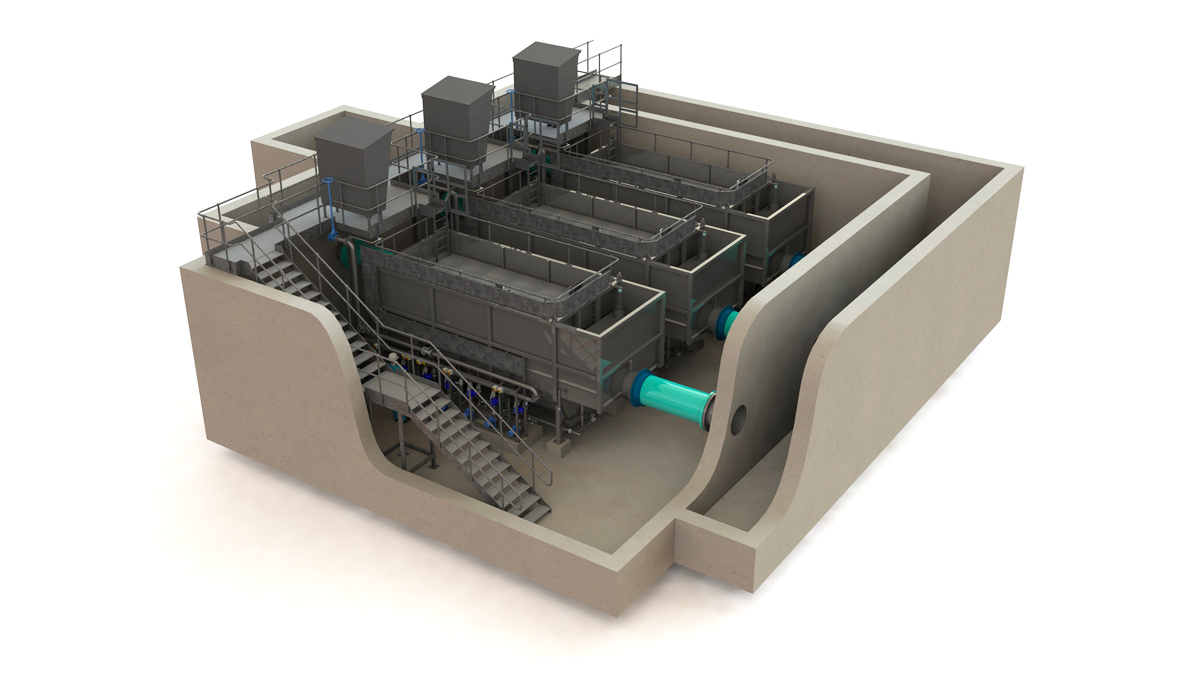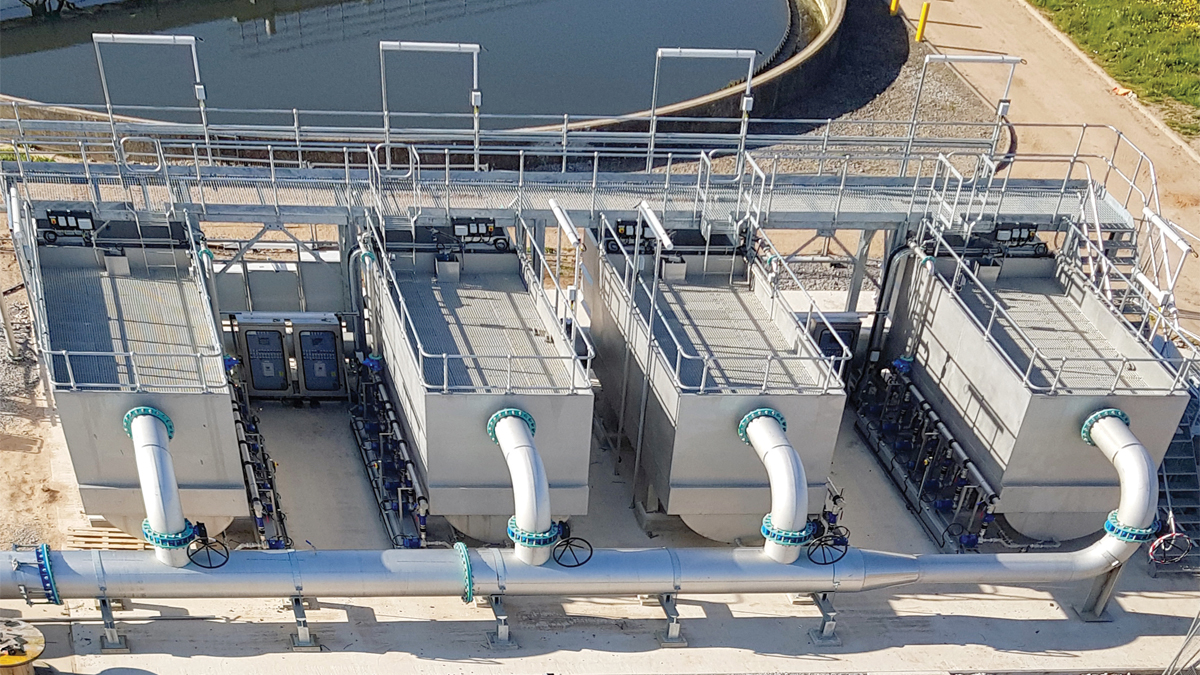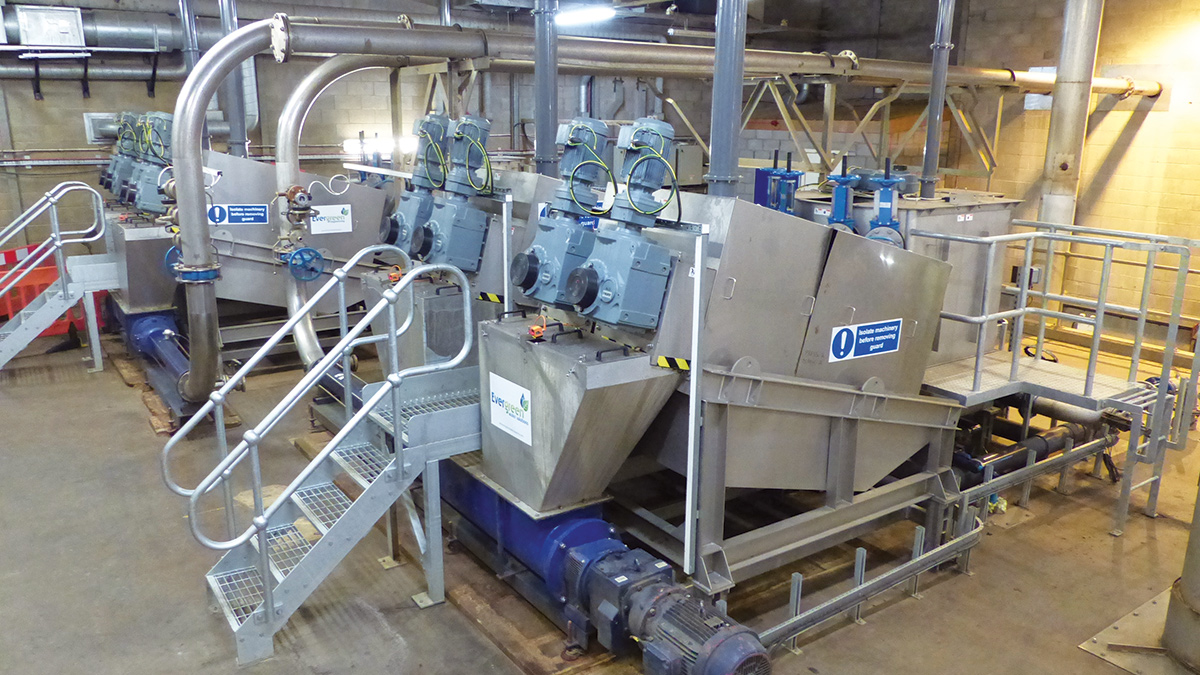Evergreen Water Solutions
Evergreen Cloth Filtration Tertiary Treatment (Winsford)
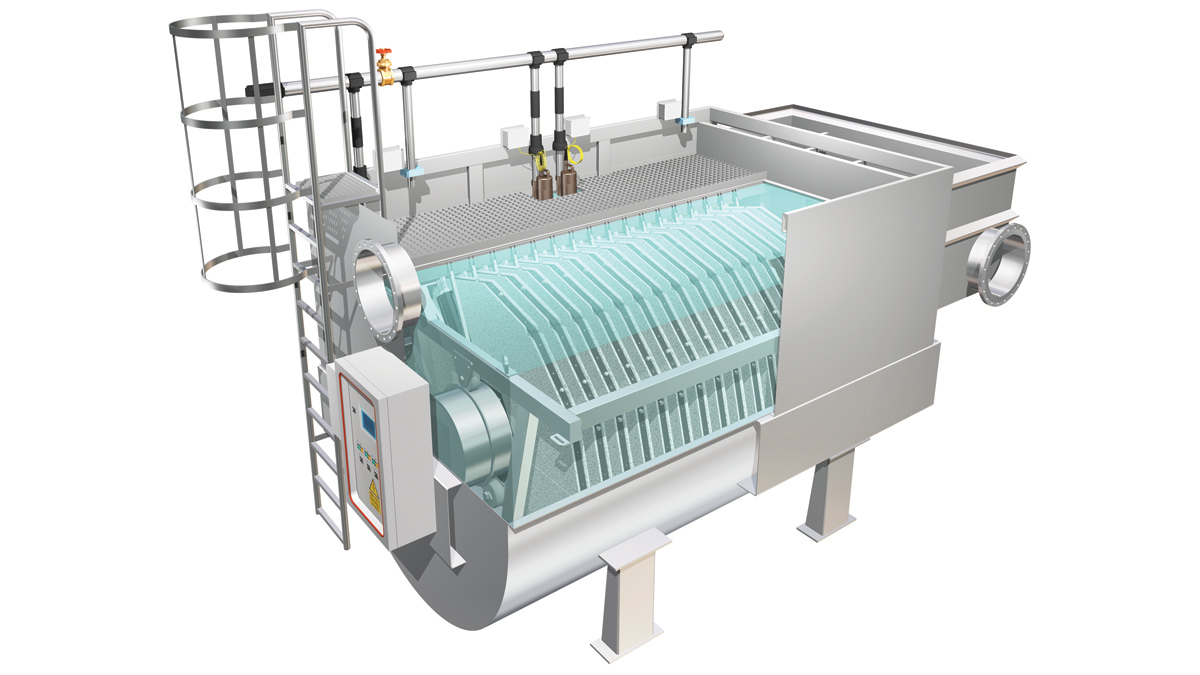
Evergreen cloth filter
Tertiary treatment processes have been used for many years to polish effluent, reducing concentrations of suspended solids (TSS), BOD and ammonia in WwTW effluent plants. Changes in UK legislation including the introduction of the Water Framework Directive and Shellfish Directive has led to increased interest in nutrient removal (P+N) technology and increasing demand for tertiary treatment in the wastewater treatment process. Tertiary treatment is essential to maintain future compliance with ever tightening Environment Agency standards. Tertiary treatment options available for the municipal market include; cloth filtration, sand filtration, membrane bioreactors and UV disinfection. Using the Evergreen Microfibre Cloth Filtration Process it is possible to achieve TSS concentration as low as 1mg/l and consequentially achieve ultra-low TP concentration. Compared with other technology the high hydraulic capacity of the units makes it an economical option with a small footprint and low operating and maintenance costs.
Tertiary filtration
The most used tertiary filtration techniques for municipal and industrial wastewater treatment plants are cloth filtration and sand filtration. Both offer similar end results, but cloth filters have a number of advantages including a small footprint and online backwash during operation without stopping the process.
Evergreen cloth filtration system
Evergreen pile cloth disc filters allow efficient TSS removal in tertiary phases of wastewater treatment works, which is an efficient way to remove phosphorus as particulate after upstream chemical dosing.
The Evergreen cloth filtration system provides solid separation using a deep pile cloth which combines the characteristics and advantages of surface filtration with that of deep bed filtration. The Evergreen cloth filter is made up of a series of filter discs mounted on an inner tube making it a very compact design.
Evergreen cloth filters are sold in the UK and Ireland from Evergreen Water Solutions.
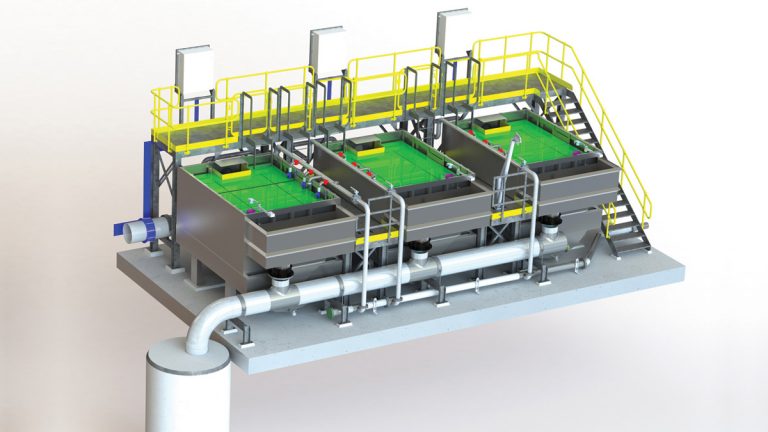
Winsford STW cloth filter 3D render showing outlet manifold – Courtesy of Evergreen Water Solutions
Product description
- Drum type: The filtration cloth is fitted on a perforated stainless-steel drum operating in a horizontal position.
- Disc type: A central drum supports up to a maximum of 32 discs, each disc comprises of six sectors made of reinforced plastic and each covered with an individual deep pile cloth.
Energy consumption (measured as W/m3 of effluent treated) for the Evergreen filter is extremely low. This is a fundamental driver in process selection. On a recent plant this was <1W/m3. Additionally a head loss of <250ml is considered for normal operation at all flows and load.
Wastewater flows to each filter either though a piped manifold or an inlet channel. The liquid level in the filter chamber is typically just above the cloth covered discs. The level is controlled by the outlet weir. The entire area over the filter is covered by open grid removable GRP decking. The decking panels are specifically designed to facilitate easy maintenance.
The influent (post-secondary clarification) passes through the filter cloth whilst the solids are retained on the cloth pile/fibres. Cloth filtration occurs under gravity flow, with all discs completely submerged. The discs will be stationary unless the solids collected on the cloth has resulted in a head loss sufficient to generate a backwash cycle.
The material coating the filter drums and discs is of the ‘pile’ or ‘free-fibre’ type. During the filtration phase the direction of flow causes the fibres to lie flat against the support panels. This results in a fine filtration matrix of overlapping piles. This creates an extremely efficient layer for the separation and retention of suspended solids in a similar manner to sand filters.
Each segment of the cloth filter disc has its own individual cloth membrane that can be changed periodically (up to 8 years). The Evergreen deep pile cloth is supplied in two sizes; standard pile cloth (10 micron) and microfibre cloth (5 micron). The microfibre pile cloth is made of thinner fibres, but more densely installed on the lower woven polyester supporting fabric, than the standard pile cloth. The footprint of a deep pile cloth filter compared with that of a deep bed sand filter is significantly reduced.
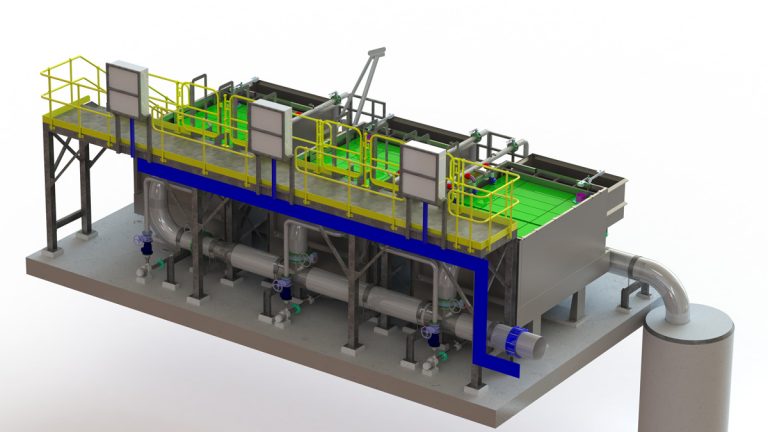
Winsford STW cloth filter 3D render showing inlet manifold – Courtesy of Evergreen Water Solutions
The online backwashing of each filter means that all filters are permanently operating and the use of the filtered water from within the filter itself eliminates the need for a backwash water reservoir. For example; a sand filter surface area of 100m2 would require a filter cloth tank of approximately 20m2 plan area.
During normal operation, solids are deposited on the cloth, causing the water level in the filter basin to rise, compared to the height of the exit weir. When a preset differential level is reached, the cloth backwash sequence is activated: a unique pumping system, connected to a series of suction nozzles, removes the solids retained on the cloths, resulting in lower operating head loss. During the backwash process the fibres are raised inside the backwash nozzle, in such a manner that the solids, previously captured, can be readily removed by the counter-current water flow. The backwash water is supplied by the filtered water contained within the filter disc drum. The backwash water (including retained solids) are returned upstream. Any solids settling in the bottom of the filter tank are removed by a pump controlled by a timer.
This filtration technique with free-fibres filter cloth allows the use of very fine fibres and the attainment of optimum separation efficiencies, even in cases of high hydraulic loading or of load peaks and with minimum backwash water flow rates.
Applications
- Tertiary treatment: Cloth filters are used with great success for tertiary filtration downstream of secondary settling tanks in biological wastewater treatment plants, both municipal and industrial. The rate of removal of suspended solids is very high and the concentration downstream of the filter can be as low as 1mg/l.
- Phosphorus reduction: Reduction of the phosphorous content when discharged into bodies of water from existing or new build wastewater treatment plant (could be downstream of an after-precipitation process).
- Pre-filtration upstream of UV disinfection: The cloth filter can be included in the upstream UV treatment ensuring the quality of the water typically specified by UV suppliers and required for good operational efficiency of the disinfection system.
- Alternative to traditional secondary clarifiers: Separation of excess sludge downstream of biological wastewater treatment with RBC, trickling filters or other fixed growth processes.
Case study – Tertiary treatment for United Utilities in Cheshire
Winsford Sewage Treatment Works opened in the mid-1960s and serves a population equivalent of 30,481 (ref: 2011 Census). The existing works comprised an inlet works, detritor, primary settlement tanks, trickling filter biological plant and humus tanks settlement tanks. The purpose of the tertiary project was to meet the new discharge consents.
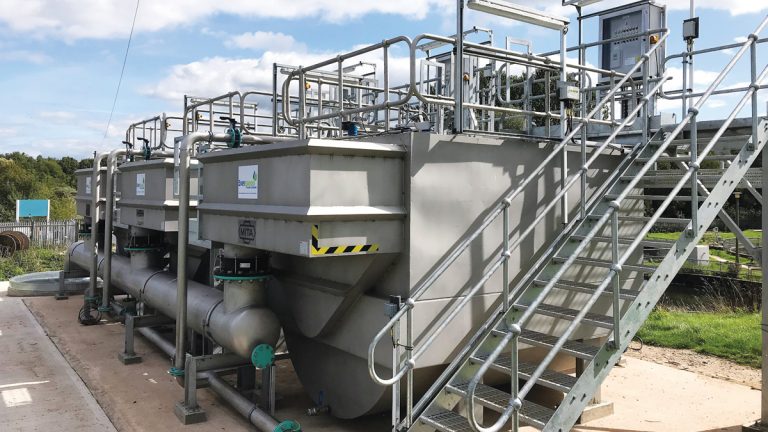
Winsford STW: 3 (No.) Evergreen MSF 12/60 Cloth filters with access platforms and local control panels – Courtesy of Evergreen Water Solutions and LiMA
The design basis of the tertiary solids removal plant is to achieve a future Total ‘P’ consent of <1 mg/l average and future total iron consent of 4mg/l 95%ile post ferric dosing. All flows up to full flow treatment (FFT) plus all return liquors will be pumped through the tertiary plant.
Winsford consent levels
- Average flow: 12,500 (m3/day)
- Peak flow: 28,400 (m3/day)
- TSS: 45mg/L (95%ile)
- Total phosphorus: < 1.0mg/l. (Ave)
- Total iron: 4mg/l (95%ile) / 8mg/l (upper tier limit)
- BOD: 25mg/l (95%ile)
- Ammonia: 7mg/l (95%ile)
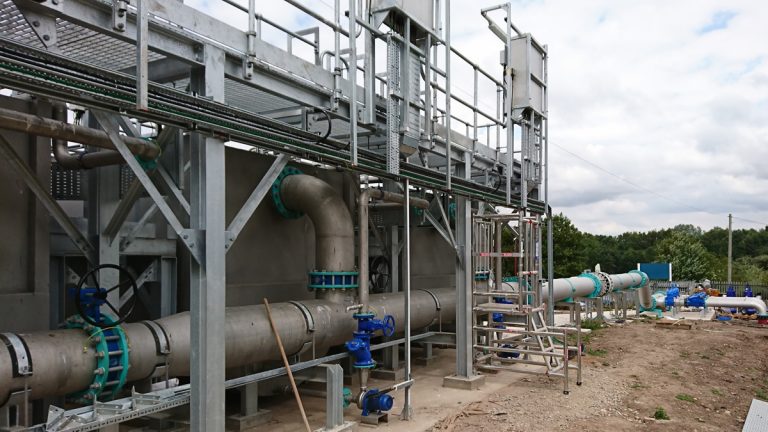
Winsford STW – Evergreen cloth filter model MSF12/60 inlet manifold – Courtesy of Evergreen Water Solutions and LiMA
Evergreen Water Solutions Ltd was the selected bidder with a complete commercial package of design, installation, commissioning, optimisation and the aftercare package for the mechanical and electrical works filters. The solution required 3 (No.) Evergreen cloth filters. The Evergreen filter selected for the tertiary treatment process was the MSF 12/60 supplied in a stainless steel tank with an integrated removable access GRP platform and GMS hand rail. The MSF 12/60 filter is made up of 12 (No.) cloth filter discs with a total filtration area of 60m2.
The filters were installed to meet the final discharge consent and were supplied to site in a format to reduce installation time.
For more information: Evergreen Water Solutions Ltd: +44 (0)1455 639760 | www.evergreenengineering.co.uk

